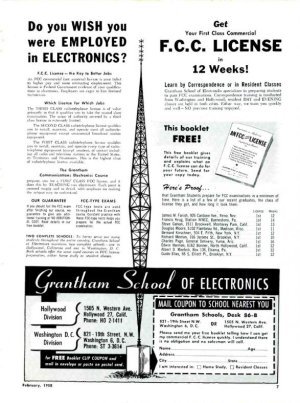This is a continuance of a tangent in "Did You Feel That?", where David Eduardo last said, "There never was a rule in Part 73 about how much news and such had to be broadcast. However, based on the renewal actions we knew certain things. One was that a combination of 8% of all non-entertainment programming was not going to hang up a renewal app every 43 years for an AM, and 6% for an FM.
There were many options for doing the programming, ranging from blocks to capsules. I ran a daily PA capsule at several stations that was simply a man in the street "Question Man" interview on a daily topic of community interest... that got us about 3 hours of weekly credit alone.
It was apparent that some PA had to be done, since that was the purpose of the grueling community leaders ascertainment process. So we tried to have at least several hours of it a week on an FM. But to some extent, it was up to the station to allocate the hours as they saw fit as long as they could justify it in the section of the renewal that asked for descriptions.
Another example of no rule but enforcement precedent was keeping commercial time under 18 minutes. Over 18 in hours in the composite week meant a letter asking for an explanation and perhaps a slower renewal. From experience, we learned how much was too much." There was some kind of change, around the time of multiple co-owned stations per market that created the situation where stations no longer ran news all day long, no matter what the format. This didn't just evolve slowly. It just suddenly happened. I thought it was a rule change and I thought I heard about it ahead of time.
There were many options for doing the programming, ranging from blocks to capsules. I ran a daily PA capsule at several stations that was simply a man in the street "Question Man" interview on a daily topic of community interest... that got us about 3 hours of weekly credit alone.
It was apparent that some PA had to be done, since that was the purpose of the grueling community leaders ascertainment process. So we tried to have at least several hours of it a week on an FM. But to some extent, it was up to the station to allocate the hours as they saw fit as long as they could justify it in the section of the renewal that asked for descriptions.
Another example of no rule but enforcement precedent was keeping commercial time under 18 minutes. Over 18 in hours in the composite week meant a letter asking for an explanation and perhaps a slower renewal. From experience, we learned how much was too much." There was some kind of change, around the time of multiple co-owned stations per market that created the situation where stations no longer ran news all day long, no matter what the format. This didn't just evolve slowly. It just suddenly happened. I thought it was a rule change and I thought I heard about it ahead of time.


